How to Start an Emergency Fund
Emergencies can happen to the best of us and quite unexpectedly, which is why you should plan for them ahead of time. Emergency funds should be an integral, non-negotiable part of your overall finances. Find out how to start an emergency fund with these actionable steps:
What is an emergency fund?
An emergency fund is a separate account that protects you and your family from any issue that may arise in the future.
With the help of our experienced financial counsellors, here are the steps you should take to start your own emergency fund, as well as bonus tips to ensure your success.
Step 1: Review your finances
Monitor your income, expenses, and spending for at least three typical months (not months with lots of birthdays, summertime, holidays, etc.) so you know just how much money you have to work with each month. It’s important to review your finances not only to give you a clear understanding of where your money goes but to stay on top of your budgeting and avoid overspending.
Step 2: Set an emergency fund goal
It’s important to set an emergency fund goal and our counsellors suggest starting with a mini fund (like $1,000) and then working towards another full emergency fund (ideally, at least 3-6 months’ worth of your living expenses). A mini fund can be used for low cost, but budget-derailing, expenses like vehicle maintenance (batteries, tires, headlights), a quick trip home for a family funeral or to welcome a new baby, unexpected appliance repair, replacing lost or stolen keys and/or ID, or a few days off due to sickness. A full emergency fund is for extended job loss or major unexpected expenses such as expensive car repairs or appliance/vehicle replacement, helping a family member in crisis, etc. While saving for your mini fund, pause any other investment or saving account contributions until your goal has been reached.

Try our calculator!
Find out how much emergency savings you should save for unexpected expenses. Try for free by clicking here.
Step 3: Work on your budget
Based on your monthly budget and goal, devise a plan to help get you there. What expenses do you need to reduce or how can you allocate your money differently to ensure you’re putting enough money away each month into your emergency fund? See what changes you can make day-to-day that can help your budget and increase your savings. Can you shop somewhere less expensive, use coupons more, or choose no-name brands? When looking at ways to maximize your budget, don’t forget to think about opportunities to generate more income, too. There are so many ways to make small changes each day and generate multiple sources of income, so get creative and find what works best for you!
Step 4: Keep your money out of sight, out of mind
Keeping your money out of sight and out of mind will make it more difficult to access so you’re less likely to spend. Do your research and find the best account for you to put your savings into and skip the bank card. By not having a bank card you will think twice before touching the money in that account. You don’t want to put your money somewhere that’s too accessible that it’s easy to spend, but you also don’t want it somewhere too inaccessible (like investments or GICs) that you can’t pull from when an emergency arises. TFSAs or opening up a separate online bank account (like Simplii Financial or Tangerine, which have no bank fees) are great options.
Step 5: Pay yourself first
Once you’ve figured out how much money you can realistically set aside each month into your emergency fund and created an account for it, treat your emergency fund like another expense. Set up automatic payments as you would for your other bills, so you don’t have to think about it. This will ensure you don’t accidentally spend that money before you save it and saves you from the hassle of adding one more thing to your to-do list.
Step 6: Determine what you consider a financial emergency
This is the most important step. Determine what would constitute a financial emergency. Ask yourself whether what you need money for is an actual need or a “want.” Don’t dip into your emergency fund if there isn’t an emergency! You’ve built up this savings account to assist you when you need it the most―be it job loss, illness, emergency car or house repairs, unexpected travel, etc. Define what an emergency is to you. What is that “Big Scary Thing” that you want to protect yourself from? What constitutes a “need” to dip into your emergency fund? And then only pull money from your account when you truly need it!
Bonus tips:
- Start small
If you’re on a low-income budget, the thought of building an emergency fund can seem far-fetched and daunting—so why even try, right? Have a strategy in place that makes it okay to save without jeopardizing your needs. It doesn’t matter if you can only put away $15 each paycheque. By the end of the month, you’ll have $30 that you didn’t think was possible before. Slowly increase your monthly contributions as you see fit.
- Talk to your partner about money
Before starting an emergency fund or tackling anything related to money, make sure you have the money talk with your partner. Money Mentors has lots of ways to start this conversation and help you get on the same page with our free online courses, workbooks, and money coaching. It’s important to be proactive and talk about money before trouble arises.
- Top up your account with unexpected cash
If you get a raise, bonus, GST rebate, carbon tax rebate, gift, tax refund or any other unexpected financial windfall, put that money into your emergency fund to help boost your savings.
- Adjust your emergency fund contribution as needed
Your financial situation will change over the course of your life, so you want to ensure your emergency fund reflects that. If your expenses increase, be aware that your current emergency fund may not cover you for the ideal 3-6 months. In that case, re-examine your monthly budget to see if there are ways for you to increase your automatic payments to your emergency fund account.
- Your credit card or line of credit is NOT an emergency fund
Having a mini fund should eliminate the need to use your credit card or seek a high-interest loan when life throws a curveball. It’s fine to use your credit card to pay for an emergency if you get points or rewards with every purchase, but make sure you have the money in your emergency fund first. Once you pay for the emergency, transfer the money out of your emergency fund and put it directly onto your credit card. This will ensure you don’t go into credit card debt paying for emergencies that you’ve already been saving for. If your credit card balance keeps creeping up, reviewing your spending can often trace the problem to these events.
- Something is better than nothing
If an emergency arises before you’ve been able to save up enough money for it, it’s okay! Use whatever funds you’ve saved up and supplement the difference from somewhere else (e.g. borrow from family, credit, sell items, etc.) You can also ask for a monthly payment arrangement with the person handling your emergency, to accumulate more funds over the payment period and minimize how much debt you need to go into. Not having enough money in your emergency fund is better than having no emergency fund at all! Use what you can and then start again!
- Keep saving
Just because you’ve reached your emergency fund goal (congrats!) doesn’t mean you should stop saving. Once you reach your emergency savings goal, think about what else you want to start saving for. You’ve been setting aside money for your emergency fund, so you’re used to living without that money. Have you started to set aside savings for retirement? Think about RRSPs or TFSAs. Do you need to eventually replace your vehicle? Start a savings account for that so you can pay cash for it or put as much down when you finance to give yourself a lower monthly car payment. Are you planning to buy a house? Start saving for the down payment. In the end, it never hurts to save more.
- Celebrate your wins
Don’t forget to recognize your accomplishments, big or small. Feel proud of how far you’ve come and how far you’ll continue to go.
- Ask for help
If you have any questions, don’t know where to start or run into any issues along the way, our amazing counsellors are only a phone call away. Book a FREE appointment with one today to get started on your financial journey!







